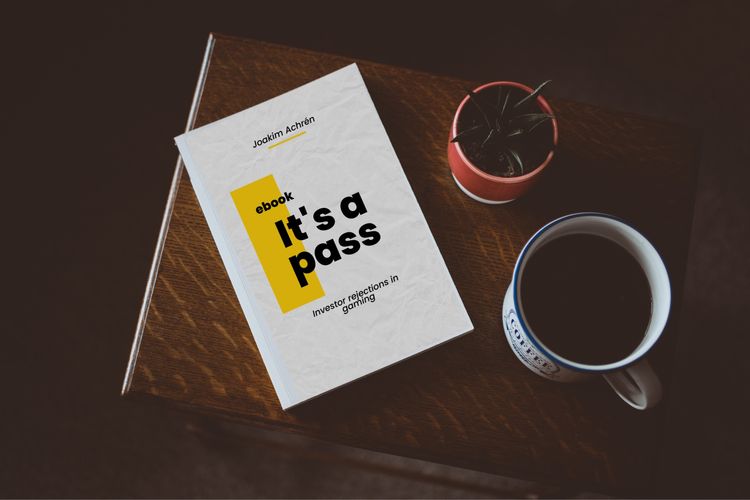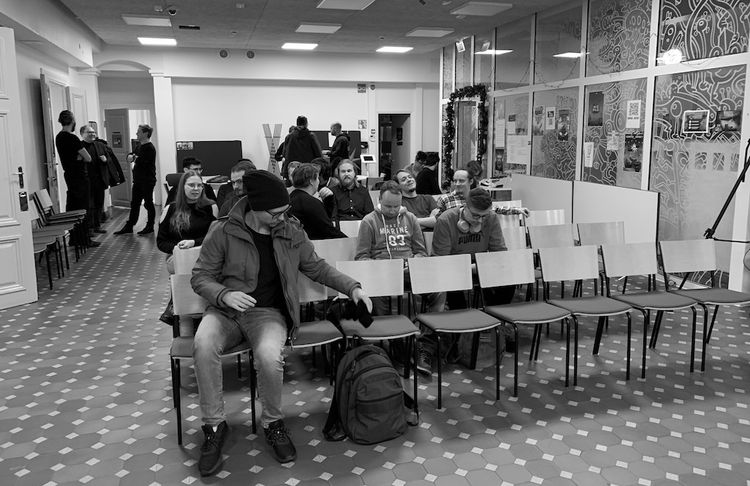EGD News #137 — Five things on being a founder

Sent on June 3rd, 2022.
If you aren’t a subscriber to EGD News, you can subscribe here.

I could have called this post, “if I went back to talk to my 27-year-old self, just setting out to found my first company, what five pieces of advice could I share?”
Here are those five pieces of advice. And it can’t be more than five, so they need to count.
1. Building a company is not about you
You are not your work, but then you also are.
In Good to Great, Jim Collins talks about a concept called Level 5 leadership:
Level 5 leaders are a study in duality: modest and willful, humble and fearless. To quickly grasp this concept, think of United States President Abraham Lincoln (one of the few Level 5 presidents in United States history), who never let his ego get in the way of his primary ambition for the larger cause of an enduring great nation. Yet those who mistook Mr. Lincoln’s personal modesty, shy nature, and awkward manner as signs of weakness found themselves terribly mistaken, to the scale of 250,000 Confederate and 360,000 Union lives, including Lincoln’s own.
Collins follows:
Can you learn to become Level 5? My hypothesis is that there are two categories of people: those who do not have the seed of Level 5 and those who do. The first category consists of people who could never in a million years bring themselves to subjugate their egoistic needs to the greater ambition of building something larger and more lasting than themselves.
You will never feel that you have enough, and you can live with it, but some adjustments are needed.
There is a catch here. What you learn might be that being a founder is not for you. That’s OK, you can still be an entrepreneur, and maybe you need to approach the idea of having a company of your own from a different angle.
Perhaps you shouldn’t be the CEO, but a part of a larger co-founding team where you can focus on a certain area of the company. Or maybe you need more time to understand your motivations for founding a company.
As we age, it becomes clearer what our purpose in life feels and looks like. If you want to have a company but feel intimidated, keep learning, searching, and examining what your entrepreneur journey could look like.
2. Building a team
Building a team is your primary and most enormous task as a leader, and it never ends.
I recently wrote about having “The right people on the bus.” I suggest you read that post to understand the basics of hiring co-founders and employees.
3. Sell it to the naysayer
There are two kinds of sales skills; one is to sway undecided or “ready to be swayed” people to your side. The other kind is when you turn a “no” into a “yes,” the negotiator salesperson.
I was always a salesperson of the former kind. I would be excited about an idea, and I could attract investors with my enthusiasm. But that doesn’t get you past the people on the fence.
What I’ve seen with young first-time founders, who can raise, is that they build convincing confidence, which changes the naysayer’s mind. It’s not about persuasion; it’s about action, which has a side-product of getting a NO to turn into a YES.
4. You need to know what the VC journey is about
Going down the VC path is not easy. It’s a commitment to building the business for a long time, to attempt to build a massive company. It’s a one-way door.
The VC path is about growing every 12 months to the next stage. Taking investor money is like pouring rocket fuel into an engine. It’s about going to the next stage in a short period of time, like six to twelve months.
I recently wrote about founder dilution, which is inevitable when you go from one stage to the next to raise more investor money. But at the same time, you are increasing your share price and company valuation. Even though your ownership percentage in the company dwindles, you own something worth a lot more at each stage.
I can’t stress this enough: investor money is meant to grow the company and raise another round soon. Sure, there are lucky moments when a company doesn’t need to raise again after a hit game launches, but it often makes sense to bring on new investors who might want to buy some founder shares and provide some wealth to the founders.
Remember: There’s always another founding round coming.
5. Keep learning.
I’ve talked about the growth mindset in previous EGD pieces, but it’s something that I wasn’t thinking about as I was starting my first company in 2005.
Back then, my mindset was that I had a business idea and wanted so badly to have my own company, so I just got to work and learned everything the hard way.
I used to believe that book-smart doesn’t matter, that only the experience you gain from putting in the work was how you’d learn things. That’s not the case.
The more hard lessons, you can learn vicariously rather than through your own hard experience, the better.
Charlie Munger
I’ve identified three ways to optimize my learning, and these pieces of optimization would have been highly beneficial for me in my early journey as a founder.
First, talk to people who’ve experienced things and ask them questions. “How did you start your company? What mistakes did you make?” Don’t just rely on one person’s hard-earned experiences; talk to dozens of people.
Secondly, reading books is another way to be learning from what others have done. Here are five essential books that I’d tell my 27-year-old counterpart to read on becoming a founder.
- Good to Great, by Jim Collins
- Great by Choice, by Jim Collins
- The Five Dysfunctions of a Team, by Patrick Lencioni
- The Infinite Game, by Simon Sinek
- Leadership: In Turbulent Times, by Doris Kearns Goodwin
- Build, by Tony Fadell (best book of 2022!)
While reading them, I need to grasp the concepts talked about in these books. It’s not enough to go through them. I’d need to think about them, write reviews, and how they matter for what I’m about to do.
After these books, there are so many more books to read. Read about management and leadership and philosophy, self-help, and biographies. Pick something like Readwise to start effectively taking notes and highlights from what you read.
Conclusion
Here are the five pieces of advice I would give myself if I could go back to 2005 when I started my first games company. I might have made all the mistakes, but maybe some of the learnings from those mistakes would’ve been realized more straightforwardly.
For you, it’s good that you don’t need to lean on only these five pieces of advice. You have everything I’ve written available on EGD’s blog.
(Photo by Matej)
Get my book, “Long Term Game: How to build a video games company” from Amazon. Available on Kindle, audiobook, and paperback. Check it out!
Building a remote-first game studio
In today’s podcast episode, I talk with Andres Constantinidis, the co-founder and CEO of Tinybytes, a remote-first mobile games studio. Andres has built his game studio as a remote company all the way from the founding days, which happened almost ten years ago.
In this discussion, we talk about creating quality games with a remote team, but still keeping up a high velocity, how to make product decisions on continuing a game that is still unsure in it’s success and what Andres would do differently if he’d go back to the early days of his company.
Listen to the full episode by going here.
If you missed out on these
- A repeat founder story
- How an ecosystem produces startups
- Building Guild of Guardians
- Freshman teams and senior teams
- Six lessons from 25 investments
- Removing uncertainty
- “Braintrust” greenlight
- and more
Articles worth reading
+ One vs. Two Token Models in Crypto Gaming — “My default response until recently was always to use two tokens, but now I’ve been rethinking that advice. I think you can make a compelling case for either choice, and I’m going to try to explain some of that nuance here. There also may be a way to get the best of both worlds, as I walk through at the end.”
+ Supercell Doubles Down On Trailmix — “While Love & Pies still has a ways to go to catch-up to other merge competitors in the space, the fact that Supercell doubled down on the company gives me confidence that there is potential.”
+ Azra Games on a16z podcast — “Azra Games is made up of 70-80% game creators & 20-30 % marketplace experts. Combining the game making ability + the marketplace expertise will enable Azra to create something special. The aim is to redefine what RPG games for collectibles could be through ownership.”
Quote that I’ve been thinking about
“The best marketing is just telling the truth.”
— Steve Jobs
Sponsored by ZEBEDEE

By building infrastructure on top of the Bitcoin protocol, ZEBEDEE is creating interoperability between different developers and studios, allowing the entire games industry to share in the same open standard for sending and receiving value. Find out more!
If you’re enjoying EGD News, I’d love it if you shared it with a friend or two. You can send them here to sign up. I try to make it one of the best emails you get each week, and I hope you’re enjoying it.
I hope you have a great weekend!
Joakim





